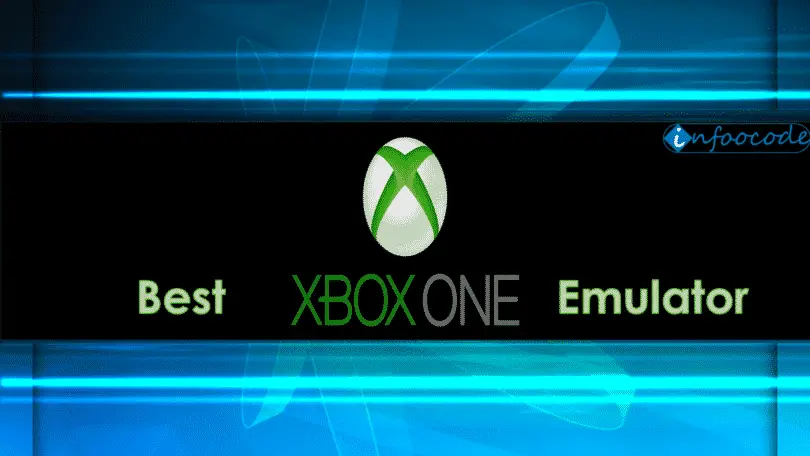It’s something of an oddity that Mac owners are able to emulate Windows, but Windows users aren’t able to do the same with Mac. Regardless, we at Appamatix are all about versatility, and we’re here with the best recommendations we can find to help you emulate a Windows PC environment on your Mac computer. If you’ve ever felt frustrated by the amount of software available for Windows (it’s a considerably larger pool than the Mac-friendly variety), then you can follow our guide to remove that barrier and gain access to more programs and apps than ever before.
Emulators For Macbook
XBOX 360 Emulator for Mac. As the name suggests this is an XBOX oriented emulator completely made for Mac OS. For playing XBOX games, XeMu360 emulator is the most widely used emulator. This is comparatively a new software and it does support almost all XBOX games. This is a very powerful emulator so that Mac OS users can enjoy playing XBOX. Unfortunately emulation of the Nintendo DS is still at an early stage. No emulator exists yet which can play most games properly. This means the current focus of emulator authors is to make their emulators more accurate, which in turn means that optimization has less priority.
I still remember when the Windows and Mac war raging and…oh, wait. I sometimes forget that this particular war never stopped, and with each successive iteration of Apple’s and Microsoft’s respective operating systems, the fires of conflict are continually re-stoked. I remember shopping for my first computer when I was beginning college and the plague of indecisiveness that kept me from actually making a purchase for a handful of months.
Finding a good Windows emulator for your Mac is an excellent way to overcome this particular anxiety, and while Windows users aren’t left with any corresponding alternative…we’re not terribly worried about them in this article. We’re talking to Mac owners, and the following list of emulators will give you access to a huge range of programs and applications that were previously only available on Windows.
Emulation is still an ambiguous subject for many people, especially if you’ve never used it before. To put it simply, emulation is the process of using your computer’s resources to simulate a virtual environment that mimics another operating system altogether. We’ve written extensively about Android emulators before, and each time that we do, we make a point to stress that emulation is entirely legal. There are legality matters to keep in consideration, but the process of emulating itself is not punishable in any way, shape, or form.
It is illegal, however, to acquire services that you’d normally have to pay for at no cost. For example, while it’s entirely legal to emulate the Windows operating system on a Mac, it is illegal to acquire a copy of Windows without paying for it. The same goes for those who are emulating the Android OS; you can certainly run the operating system, but you’re always expected to pay for the apps and other content that would normally have a price attached to them.
In short, emulation is not a way to circumvent price tags; it’s a way to harness accessibility and broaden your use of a particular platform. Using it, you can remove obstacles that would normally be put in place by the proprietary nature of certain software with certain operating systems. Apple may be known for this more than Windows is, but ask anyone in a professional environment that has both Mac and Windows computers, and they’ll explain the frequent need to be able to use file types specific to either platform.

With that established, there’s one thing that you’re most likely going to need before you can emulate Windows on your Mac, and that’s a copy of the Windows operating system, itself. Not all of our recommendations are going to require this, but in the following list of recommendations, we’ll let you know where it is required so that you can be prepared.
Boot Camp
It’s hard not to recommend Boot Camp as your first method of Windows operating system emulation since it’s an actual Mac application. Boot Camp allows your computer to create a partition specific to the installation of the Windows so that you can have every functionality of Microsoft’s operating system available on your Mac. This is also a more straightforward and comprehensive emulation option than many others that I’ve found, and because it’s coming straight from Apple, it’s also the most reliable.


If you opt to use Boot Camp, you’ll get the usual plethora of Mac support to go along with it, and the fact that the entire Windows operating system is installed on a partition means that you can even upgrade to newer versions of Windows rather seamlessly. Other emulators that focus more on individual apps, programs, and Windows features don’t offer the same throughput accessibility, which makes Boot Camp my #1 recommendation for Mac users that want to run anything Windows-related.
Parallels Desktop
Parallels Desktop lives up to its namesake by providing the Windows experience right on the desktop of your Mac. Whereas Boot Camp is going to require you to reboot your computer entirely before you’re able to access your partitioned version of Windows, Parallels Desktop is designed to bring Windows programs and applications right to your fingertips from the desktop of your Mac, without any need to reboot at all.
The concept behind the software is to give you the best of both worlds without the need for incessant switching between them–the versatility and software library of windows with the strength of Mac (and not to mention, Apple’s top-notch proprietary software like iMovie and GarageBand.) You can fine-tune the settings of Parallels Desktop for productivity, production, or even gaming, if that’s your thing.
Emulators For Macbook Pro
While this “best of both worlds” take on emulation software is quite a good idea, and probably best-executed by Parallels Desktop, it isn’t without its share of problems and errors. Those withstanding, however, this is worth a look if you’re irritated by Boot Camp’s need to restart your computer whenever you want to access Windows.
VMware Fusion
If Boot Camp and Parallels Desktop are at two opposite ends of the emulation spectrum, VMware Fusion is somewhere in between those two. Like Parallels Desktop, it allows you to utilize the strengths of both operating systems at once, without requiring your computer to reboot. This can be a beneficial thing if it’s the operating system itself that you’re looking to take advantage of, but is a less fruitful option if it’s Windows’ software library that you want access to on your Mac.
While VMware Fusion is definitely adept at what it promises, and if you’re wanting to get ahold of Windows applications and operating system functions, this will let you do just that from the comfort of your Mac desktop. It’s actually advertised as a good companion app to use alongside Boot Camp, to better manage the partition that it requires in order to install Windows.
Interestingly, VMware Fusion is a great choice for new Mac owners who are switching over from previously using a Windows desktop or laptop. It enables you to migrate your entire Windows computer onto your Mac, provided you’re not strapped for storage space. This makes transfer of your important files, documents, and applications easier than it ought to be.
Virtual PC for Mac
This is another odd-duck emulator that may not be suitable for everyone, but for those whose needs are met by its unique feature set, it’s perfect.
Emulators For Mac


Rather than overburdening your Mac with an entire operating system installation, Virtual PC works by allowing you to run Windows-bound applications and access Windows-only network settings and tasks. This makes it a top solution for Mac users who frequently work in a business environment dominated by Windows machines, since it lets you work with file types commonly limited only to Windows users. Imagine a remote desktop connection through your Mac, but instead of controlling a separate PC from your own computer, you’re bringing that PC’s functionality temporarily onto your Mac for specific purposes.
Like VMware Fusion, Virtual PC for Mac is somewhat limited in its capability. Lightweight applications it can handle without flinching, but hardware-demanding games and other intensive applications (such as video editors and high-resolution image editors) might not work as well, and would function better in a more comprehensive emulation environment like Boot Camp. Therefore, it exists as an alternative way to access Windows applications, or an especially handy assistant to Boot Camp.
Of course, these methods aren’t the only ways that you can get access to Windows on your Mac, and you don’t only have to rely upon emulation either. Though it’s the method that I’d recommend most highly, you can also accomplish many of the same tasks with a remote desktop connection, but only if you also have a Windows computer for your Mac to connect to. Microsoft has even designed an app for the Mac app store that will help you to accomplish this exact feature. Alternatively, you can always condense the list of things that you want to accomplish in an emulated version of Windows, and see if there’s a Mac friendly software application that will allow you to skip the emulation process altogether.
Depending on your needs, it’s a safe bet that one of the above emulators is going to be precisely what you’re looking for. Though they each bridge the Mac OS X experience and Windows in different ways, they all do it concisely and reliably, making them the best Windows PC emulators that you’ll find. However, we’re wide open to some of your own recommendations (and questions, too!) so share your thoughts in the comments below!
Advertisement
